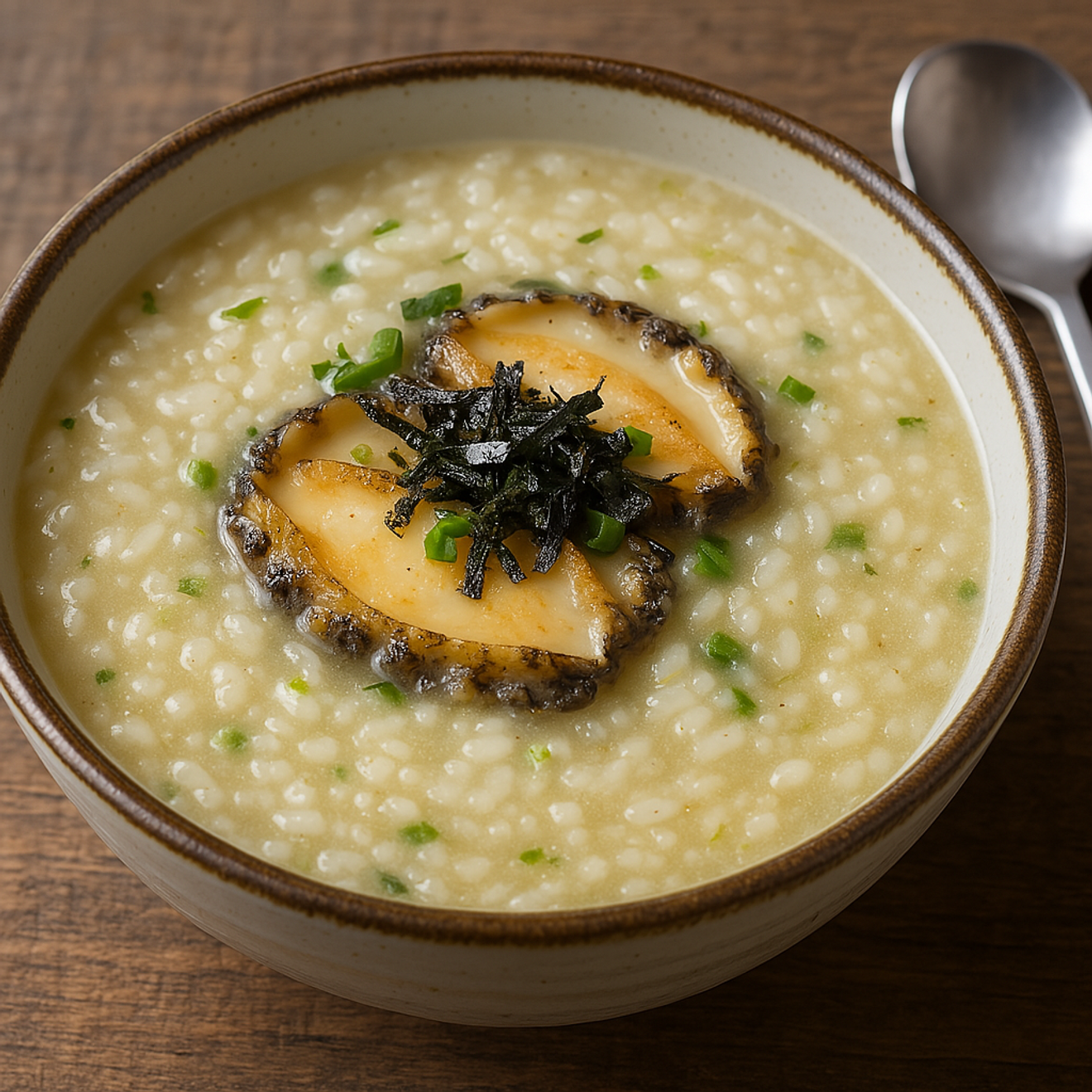Jeju Island is an island, so you can see a lot of seafood dishes. Therefore, there are many dishes using seafood.
Let's learn about Jeju food.

Abalone Porridge
If it's a nutritious shellfish from the sea, abalone is the best of the best.
Abalone was also a tribute offered to the king,
and even now, its price is not easily affordable.
Abalone has a high absorption rate in the body, is rich in nutrients, and also
has a savory taste, making it a popular dish among tourists visiting Jeju.
It is one of the popular foods.
Sea Urchin Soup
In Jeju, sea urchins are called "gusari".
So sea urchin soup is also called "gusari-guk," and
because it's cooked with seaweed, it's also called sea urchin seaweed soup.
Sea urchins are caught most in May and June,
and the sea urchins that live in the waters off Jeju are called purple sea urchins.
The yellow flesh inside the shell is sweet and rich in protein, vitamins,
and iron. Using this yellow flesh,
seaweed soup is made, which is sea urchin soup.
It has a richer flavor than beef seaweed soup,
making it a representative dish that can only be tasted in Jeju.
Water Hoe (Spicy Seafood Soup)
Water hoe is a dish that is also enjoyed in other regions,
but Jeju's water hoe has various types, such as "jari" water hoe, sea cucumber water hoe, turban shell water hoe, and squid water hoe.
In particular, "jari" water hoe, which doesn't have a fishy smell, is a representative Jeju water hoe.
It's a representative Jeju water hoe without any fishy smell.
Grilled Rockfish
Rockfish is a high-grade fish species, and in Korea, it is only caught in the coastal areas near Jeju,
so you can't taste it unless you're in Jeju.
In Jeju, it is also called "solani," and rockfish caught in winter are
semi-dried before being used in cooking.
It's grilled, added to seaweed soup, or made into water hoe.
It has a delicious, clean taste without any fishy smell, and because it's a precious fish, it was only served on holidays or
offered as an important food during ancestral rites in Jeju.
It's a popular item that tourists visiting Jeju often buy.
There are many grilled rockfish restaurants in Jeju, so please try it yourself.
Pheasant Buckwheat Noodles
This is a dish mainly eaten in winter. It is made by boiling buckwheat noodles in broth made from pheasant.
It's similar to chicken noodle soup.
Pheasant is also eaten in dishes like sashimi, shabu-shabu, and dumpling soup.
Hairtail Soup and Grill
The reason why Jeju's seafood dishes are excellent is their freshness.
Because you can taste the freshly caught fish and seafood nearby.
Hairtail is also like that, and its shiny appearance indicates high freshness.
Using this hairtail, the clear hairtail soup allows you to savor the rich flavor of the hairtail.
Hairtail is commonly grilled, and its grilled version is also delicious.
Seafood Stew
Jeju has various stew dishes using seafood.
Although they look similar, their names differ depending on the main ingredient.
Representative examples include seafood stew with turban shells, shrimp, clams, and abalone, and abalone stew with three or four abalones.
If you want to experience the refreshing taste of Jeju's seafood, I highly recommend stew dishes.
Moms (Seaweed Soup)
"Mom" is a Jeju dialect referring to hijiki seaweed, a type of brown algae. In spring,
freshly harvested "mom" from the sea is blanched and eaten.
Momguk is made by adding dried "mom" to a blood sausage-like soup made with pork broth.
It's a dish that always appears at celebrations in Jeju.
For the best taste, it's recommended to try it at a market or a 5-day market.
Bingtteok (Rolled Pancakes)
Bingtteok is a pancake rolled up.
Neither a dumpling nor a pancake, bingtteok is a unique local food that can only be tasted in Jeju.
It's made by preparing a filling of julienned radish and blanched soybean sprouts, and wrapping it in a flat buckwheat pancake.
Native Black Pork
In the past in Jeju, pig pens were located under toilets, so pigs were said to have eaten human excrement and were called "dung pigs," but now such pigs no longer exist.
However, Jeju's native black pork still boasts superior meat quality,
differentiating itself from pork from other regions.
Please try it once!
Comments0